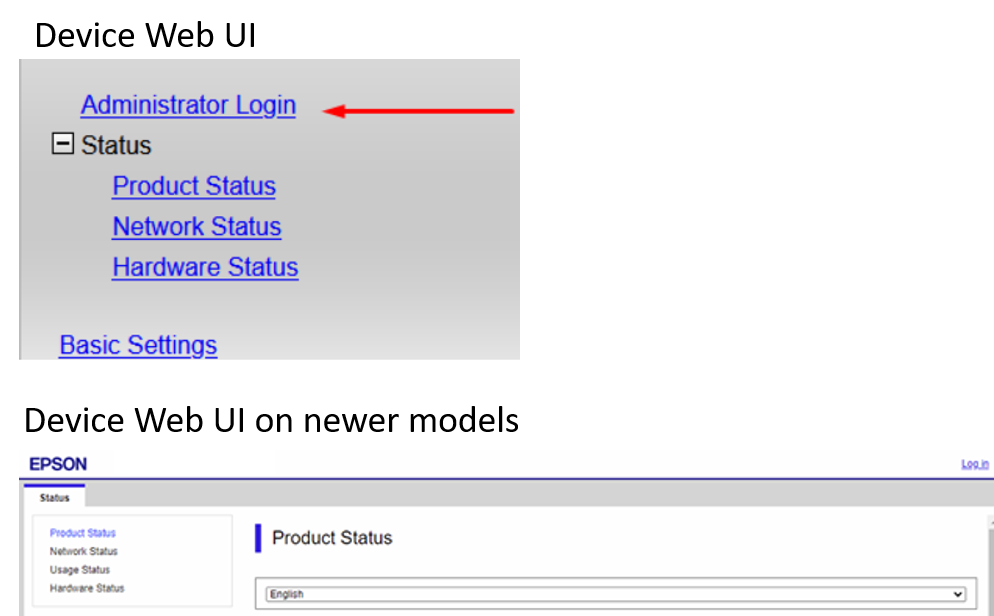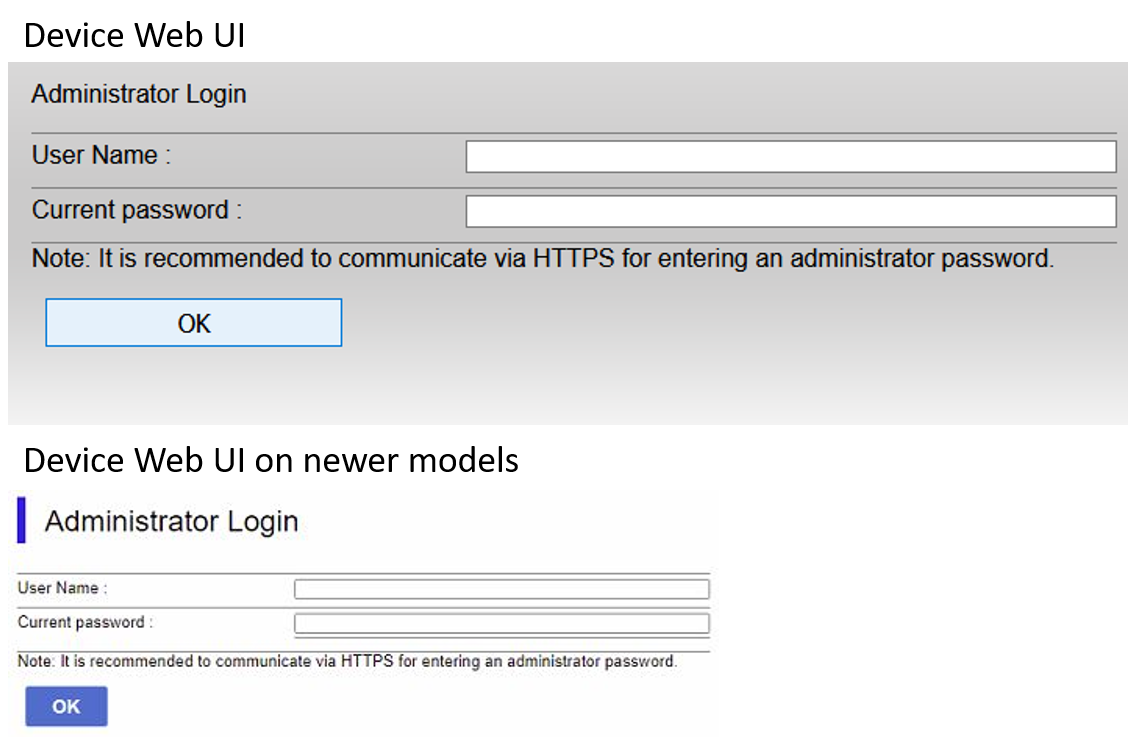Before the installation
Requirements
MyQ Epson Embedded terminal 10.1 is supported on MyQ Print server 10.1 and newer.
MyQ Epson Embedded terminal 10.1 patch 6+ is supported on MyQ Print server 10.1 patch 9+ or MyQ Print server 10.2 RC7+.
For information about communication protocols and ports, check the MyQ Print Server guide.
The correct time and date must be set on the printing device to avoid issues with the Scan to Me functionality.
Important note: There should be differences in counters between the device web UI and the MyQ reports because Epson devices omit accounting of blank pages, but MyQ is counting them.
Epson Open Platform needs to be enabled on the printing device's web UI before the installation.
To enable it:
Go to the printer's web UI by accessing http://*IP address of the printer*/
Go to Administrator Login.

Provide the User Name (administrator by default) and Current password (the device's admin password) credentials and click OK. These credentials are mandatory and if they are not provided, the installation fails.

On the left-side menu, expand Epson Open Platform Settings and click Product key.
Select the Epson Open Platform Version (the latest one is preferred) and Enter product key. To obtain this product key, you need to register your printing device with Epson support.

Click Next, verify the information provided, and click OK (the network is restarted, and the printer is available again after a few minutes).
Installation of the SSL certificate
Some devices require the manual installation of the SSL certificate into the device’s web UI for using Easy Scan operations. The certificate can be uploaded in the device’s Web UI. Go to the Network Security tab, in the CA Certificate section, and Import the certificate.
For version MyQ Epson Embedded Terminal 10.1 patch 1+ the certificate should be installed automatically during the remote configuration.

To avoid any DNS issues, it is recommended to add the IP address of the server as the Server Alternative names for the certificate:
In the MyQ web administrator interface, go to MyQ, Settings, Network and in the Communication Security section, enter the IP address of the server to Server alternative names and press Generate new Server certificate.

When the certificate is generated, confirm the changes by clicking the Save button.

The generated SSL certificate in the folder C:\ProgramData\MyQ\data\Cert should be installed in the device.
